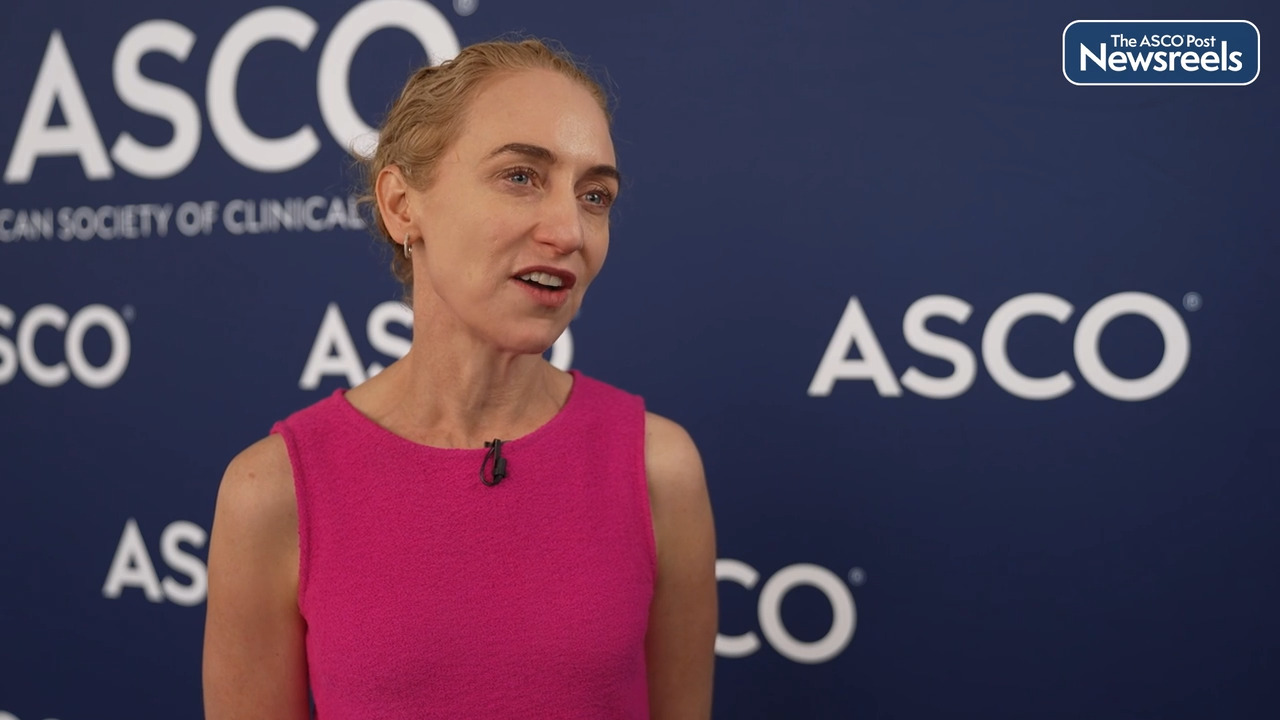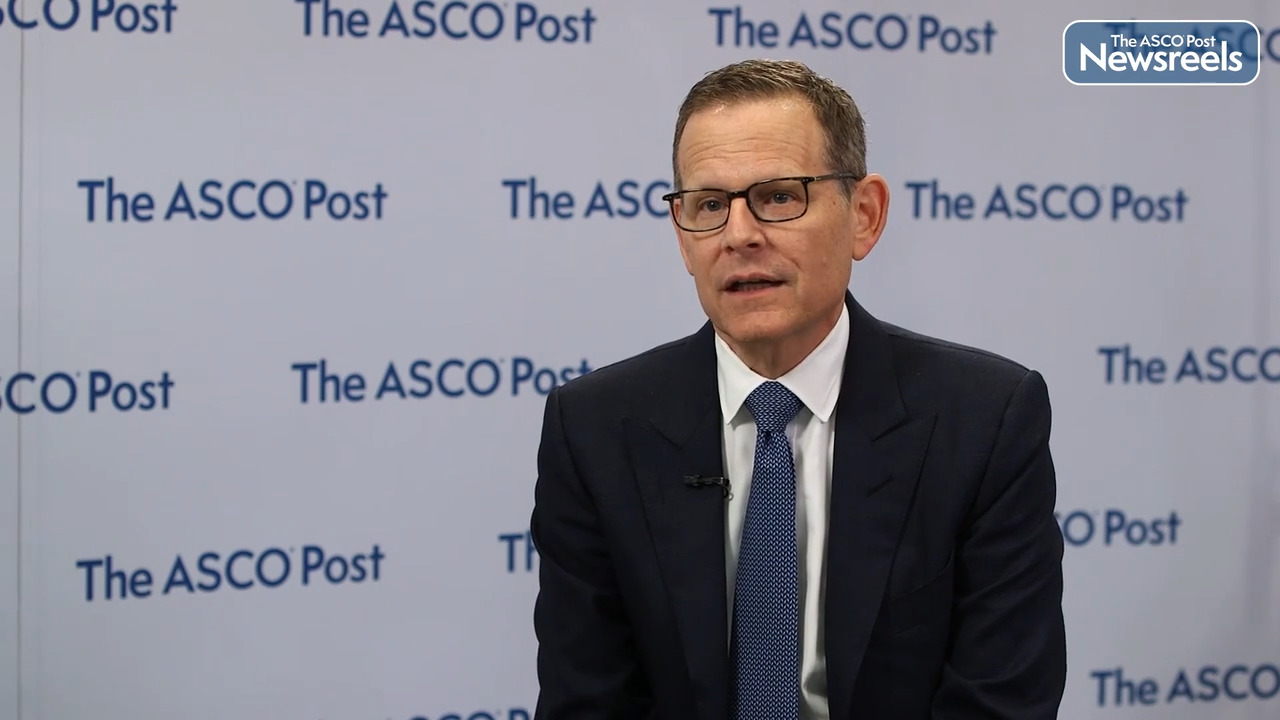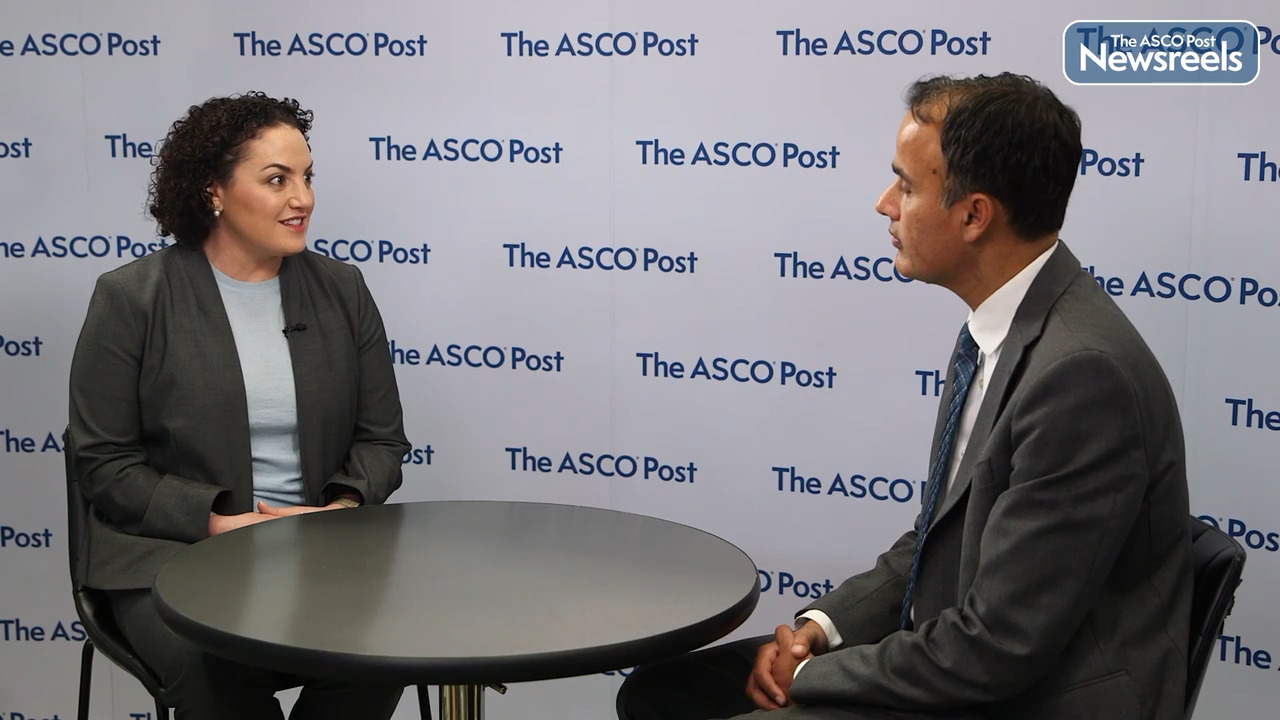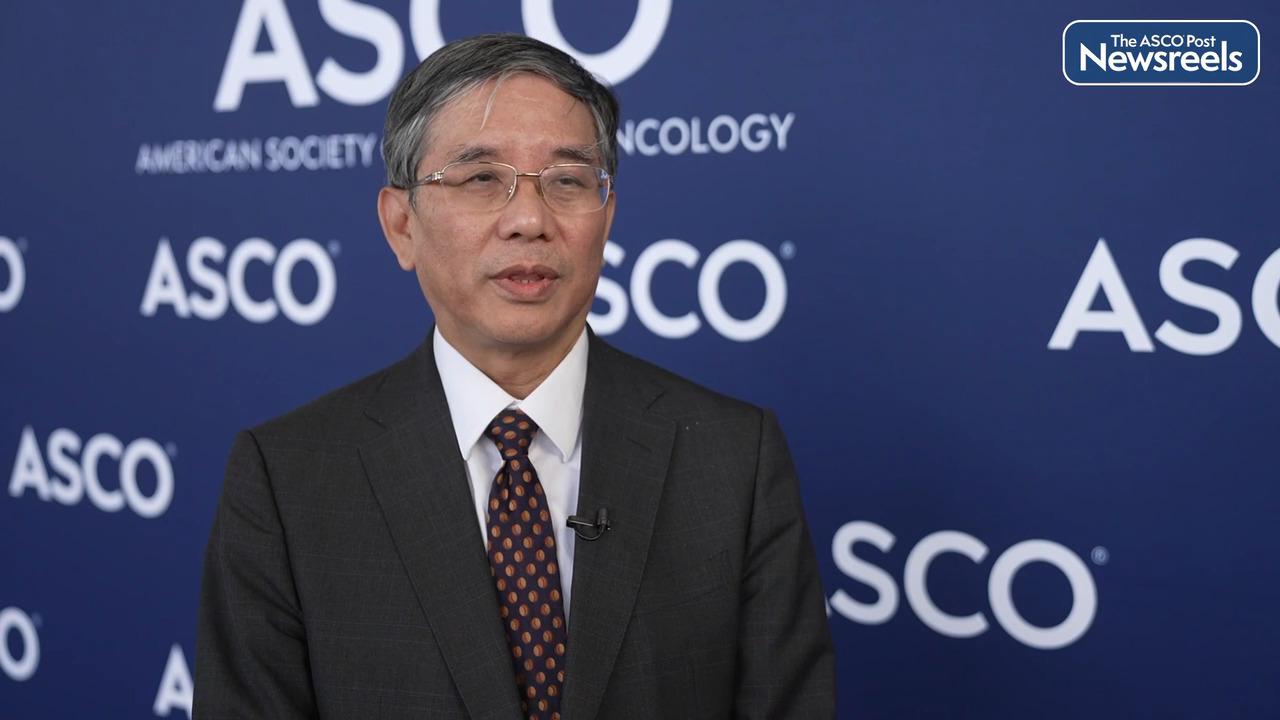Omid Hamid, MD, on Advanced Melanoma: Durable Response With Fianlimab Plus Cemiplimab
2023 ASCO Annual Meeting
Omid Hamid, MD, of The Angeles Clinic & Research Institute, discusses study findings on fianlimab plus cemiplimab-rwlc, which showed clinical activity in patients with advanced melanoma, comparing favorably with other approved combinations of immune checkpoint inhibitors in the same clinical setting. This is the first indication that dual LAG-3 blockade may produce a high level of activity with significant overall response rate after adjuvant anti–PD-1 treatment. A phase III trial of this regimen in treatment-naive patients with advanced melanoma is ongoing (Abstract 9501).
Transcript
Disclaimer: This video transcript has not been proofread or edited and may contain errors.
Omid Hamid, MD:
This study enrolled patients with advanced or metastatic melanoma who had not seen anti-PD-1 antibody in the advanced stage. We treated these patients with melanoma in three cohorts with fianlimab, which is an anti-LAG-3 antibody and cemiplimab, an anti-PD-1 antibody at doses of 1,600 milligrams and 350 milligrams every three weeks. This is important because it's a higher dose of anti-LAG antibody and an increased frequency of dosing. There were three cohorts. The first cohort had patients who had seen a non-PD-1 prior therapy, the second had a treatment naive patients, and the third were for patients who had seen adjuvant PD-1 therapy and had more than six months without recurrence and then became advanced and were treated. What we saw in these patients in these sequentially accrued groups was a high response rate, 63%, 63%, and 56% in the prior adjuvant therapeutic group.
The disease control rate was equally impressive, 80%, 80%, and 67%. The duration of response has not been reached in any of these cohorts. What we saw in terms of toxicity was consistent with prior PD-1 LAG-3 combinations with an increased incidence of manageable adrenal insufficiency. For me, the most important subset of patients here is the third cohort. For patients who had seen prior PD-1 in the adjuvant setting and then recurred after six months, we see a 62% response rate and a progression-free survival of 12 months. This is the best and highest response and control in patients who have seen prior PD-1 reported to date. The duration of response here has not been reached, and in all patients, a progression-free survival of 15 months was seen, which compares favorably in response rate, duration of response, toxicities, and progression-free survival of other cohorts of patients presented in relativity 47 or checkmate 67.
Related Videos
The ASCO Post Staff
Reid Merryman, MD, of Dana-Farber Cancer Institute, discusses his findings on the regimen of epcoritamab plus rituximab and lenalidomide for patients with high-risk follicular lymphoma. Regardless of whether their disease progressed within 24 months of first-line chemoimmunotherapy, this regimen showed antitumor activity and a manageable safety profile in patients with relapsed or refractory disease. Epcoritamab, a subcutaneous T-cell–engaging bispecific antibody, may abrogate the negative effects of high-risk features (Abstract 7506).
The ASCO Post Staff
Georgina V. Long, MD, PhD, of Melanoma Institute Australia and The University of Sydney, discusses new data showing that patients with resected stage IIB/C melanoma who were treated with adjuvant nivolumab had prolonged recurrence-free survival compared with placebo across all biomarker subgroups. The baseline biomarkers most predictive of prolonged recurrence-free survival with nivolumab were high interferon gamma score, high tumor mutational burden, CD8 T-cell infiltration, and low C-reactive protein (Abstract 9504).
The ASCO Post Staff
Clifford A. Hudis, MD, ASCO Chief Executive Officer, talks about extending the reach and impact of ASCO by partnering with patients who play a key role in advancing science through clinical trial participation. With near-record numbers of registered attendees, the 2023 Annual Meeting fostered new connections and plans for collaborations.
The ASCO Post Staff
Allison Betof Warner, MD, PhD, of Stanford University Medical Center, and Adnan Khattak, MBBS, FRACP, PhD, of Australia’s Hollywood Private Hospital & Edith Cowan University, discuss the use of the mRNA-4157 vaccine in combination with pembrolizumab as adjuvant therapy for resected high-risk melanoma, which prolonged distant metastasis–free survival compared with pembrolizumab alone. These results provide further evidence that a personalized neoantigen approach is potentially beneficial (Abstract LBA9503).
The ASCO Post Staff
James Chih-Hsin Yang, MD, PhD, of the National Taiwan University Hospital and National Taiwan University Cancer Center, discusses the latest data from the phase III KEYNOTE-789 study, which evaluated the efficacy and safety of pemetrexed plus platinum chemotherapy (carboplatin or cisplatin) with or without pembrolizumab in the treatment of adults with EGFR tyrosine kinase inhibitor–resistant, EGFR–mutated, metastatic nonsquamous non–small cell lung cancer (NSCLC) (Abstract LBA9000).





